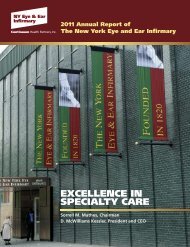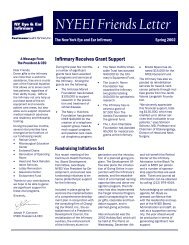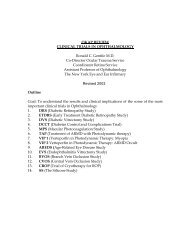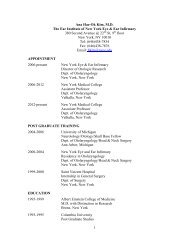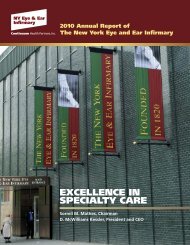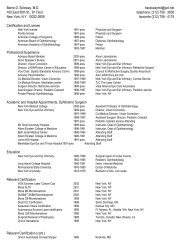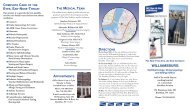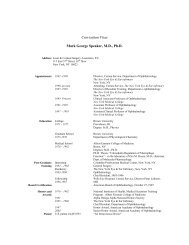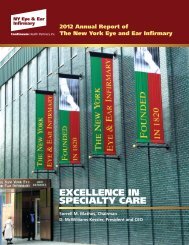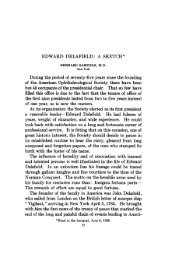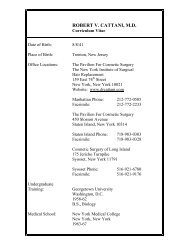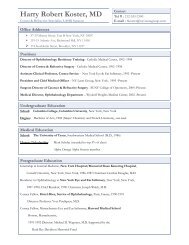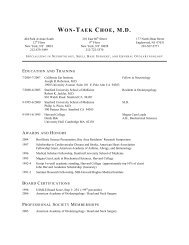OKAP and BOARD REVIEW COURSE PRETEST on EYELIDS ...
OKAP and BOARD REVIEW COURSE PRETEST on EYELIDS ...
OKAP and BOARD REVIEW COURSE PRETEST on EYELIDS ...
You also want an ePaper? Increase the reach of your titles
YUMPU automatically turns print PDFs into web optimized ePapers that Google loves.
Directi<strong>on</strong>s: Each of the questi<strong>on</strong>s or incomplete statements below is followed by five suggested<br />
answers or completi<strong>on</strong>s. Select the <strong>on</strong>e that is BEST in each case.<br />
1. The nasolacrimal duct opens into the<br />
A. superior meatus of the nose<br />
B. middle meatus of the nose<br />
C. inferior meatus of the nose<br />
D. 50% of the time into the middle meatus, 50% of the time into the inferior meatus<br />
E. 50% of the time into the superior meatus, 50% of the time into the middle meatus<br />
REF: 8 – pp. 230-232<br />
2. How many millimeters medial to the medial canthus is the angular vein situated?<br />
A. 1 mm<br />
B. 2 mm<br />
C. 4 mm<br />
D. 8 mm<br />
E. 10-12 mm<br />
REF: 8 – p. 414<br />
3. The layers traversed in cutting through the eyelid 15 mm above the upper last line are<br />
A. skin, orbicularis, tarsus, c<strong>on</strong>junctiva<br />
B. skin, orbicularis, orbital septum, Muller’s muscle, levator, c<strong>on</strong>junctiva<br />
C. skin, orbicularis, orbital septum, fat, levator, Muller’s muscle, c<strong>on</strong>junctiva<br />
D. skin, orbicularis, levator, orbital septum, Muller’s muscle, c<strong>on</strong>junctiva<br />
E. skin, orbicularis, levator, Muller’s muscle, c<strong>on</strong>junctiva<br />
REF: 8 – pp. 175-176<br />
4. All the following are true about Muller’s muscle EXCEPT that it<br />
A. arises from the inferior aspect of the levator palpebrae behind the plane of the<br />
posterior pole of the globe<br />
B. inserts into the superior tarsal plate<br />
C. is sympathetically innervated<br />
D. gives off a superolateral n<strong>on</strong>striated muscle which surrounds the palpebral lobe of<br />
the lacrimal gl<str<strong>on</strong>g>and</str<strong>on</strong>g><br />
E. is approximately 15 to 20 mm wide at its origin<br />
REF: 8 – p. 270<br />
5. All of the following are true about the tarsi EXCEPT that<br />
A. the substance of the tarsus is mesodermal in origin<br />
B. the Meibomian gl<str<strong>on</strong>g>and</str<strong>on</strong>g>s are ectodermal in origin<br />
C. it is a cartilaginous skelet<strong>on</strong><br />
D. its extremities are c<strong>on</strong>nected to the medial <str<strong>on</strong>g>and</str<strong>on</strong>g> palpebral ligaments<br />
E. the medial end terminates at the punctum to join the medial canthal ligament<br />
REF: 8 – p. 189



